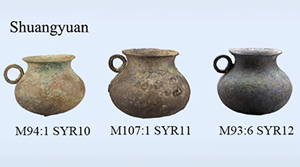Ground stone tools are frequently found in archaeological contexts from early to late prehistoric times. These tools are key evidence for reconstructing past societies’ lifeways, technology and know-how, given their role in different tasks, including subsistence and craft activities. In recent years, the field of use-wear studies on ground stone tools showed an exponential growth in applying quantitative methods at all scales of observations, from macro to micro. These included using 3D models to measure and identify worked areas, spatial analyses for exploring trace and residue distribution, and confocal profilometers to analyse micro-polish texture. In this paper, we present results stemming from the application of confocal light microscopy and 3D surface texture analysis to identify and distinguish micro-polishes deriving from the processing of plant foods. We tested the potential of this method by analysing micro-polishes on modern limestone replicas used for grinding, pounding and dehusking wild and domestic cereal grains and legumes. Following a multi-level analysis, we demonstrate the efficacy of confocal microscopy and 3D surface texture analysis in correctly discriminating between different micro-polishes. We show how this method, integrated with the qualitative assessment of use-wear, may enhance functional interpretations of ground stone tools; we also discuss the current limits and future perspectives for their systematic application in the study of archaeological assemblages.

 扫码关注我们
扫码关注我们
 求助内容:
求助内容: 应助结果提醒方式:
应助结果提醒方式:
